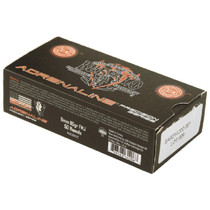NDA’s Deer Report Finds 88% of the U.S. Whitetail Harvest Occurs on Private Land
Posted by Kip Adams on Jan 30th 2023

White-tailed deer are the most important game species in North America. More hunters pursue whitetails than any other species, and whitetail hunters contribute more financially than any other hunter segment. Collectively speaking, whitetails are the foundation of the entire hunting industry. However, there are other prominent deer species and subspecies worth mentioning too. T
hat is why I am so excited that we can bring you this annual report on the status of deer hunting and management programs. It includes information on black-tailed, Coues, Key, and mule deer, in addition to whitetails. We are in a unique position to gather data from state and provincial wildlife agencies, the nation’s leading deer researchers, and other sources to provide a true “State of the Deer” address for hunters, landowners, natural resource professionals and the media.
So, how are deer and deer hunters doing? There are some very positive trends occurring. In the whitetail world, yearling buck harvest rates are near the lowest ever recorded, and the percentage of 3.5-year-old and older bucks in the harvest is 40% of the total antlered buck harvest, which is nearly the highest percentage ever recorded. Hunters are clearly reaping the benefits of more naturally balanced age structures in herds across the whitetail’s range.
In addition, the antlered buck (those 1.5 years or older) harvest is over 2.9 million, which matches our previous five-year average. Similarly, the antlerless harvest topped three million and was three percent above the previous five-year average. Michigan hunters shot the most antlered bucks per square mile (PSM), and Pennsylvania hunters shot the most antlerless deer PSM. With respect to mule deer, populations are stable or increasing in most states they inhabit. Oregon reported harvesting the most antlered bucks PSM, while Colorado and Montana shot the most antlerless deer PSM.
The biggest issues and trends include 63% of states provide opportunities for hunters to donate funds for conservation or purchase habitat stamps. Twentyseven states have formal private land hunting access programs, and these are found primarily in the West and Midwest. All states use social media to distribute content and information, all offer online permit sales, and 98% offer online hunter education. Massachusetts is the lone state not providing this option. Feral hogs are present in 50% of states and cause an estimated $2 billion in damage annually. Hogs negatively impact deer management programs in 36% of states, 93% of states have laws prohibiting the public from transporting and releasing live hogs, and 47% of states have a dedicated feral hog task force. Nearly 3/4 of states (73%) confirm positive CWD samples with a second test, and 65% of stats have targeted removal as part of their CWD toolbox. Nearly 2/3 of states (66%) allow antlered bucks to be harvested on damage/depredation tags. Resident hunters can get a buck tag annually in most states (87%), and nonresidents fair nearly as well (83% of states). Conversely, all residents can only get an antlerless tag annually in 67% of states and nonresidents in 63% of states. Finally, the top issues impacting deer management programs were CWD/ disease, hunter access, and declining hunter numbers.
All this information and much more is included in the following pages. I hope you enjoy the data, interpretations, and NDA’s recommendations as you read this report. Each annual report is different as they cover the most pressing issues of that year so if you enjoy this one be sure to check out the other reports going back to 2009 at deerassociation.com. Here’s to a productive 2023 and a great deer season this fall!
NDA’s Deer Report is available for free download at this LINK
 |  |
 |  |









